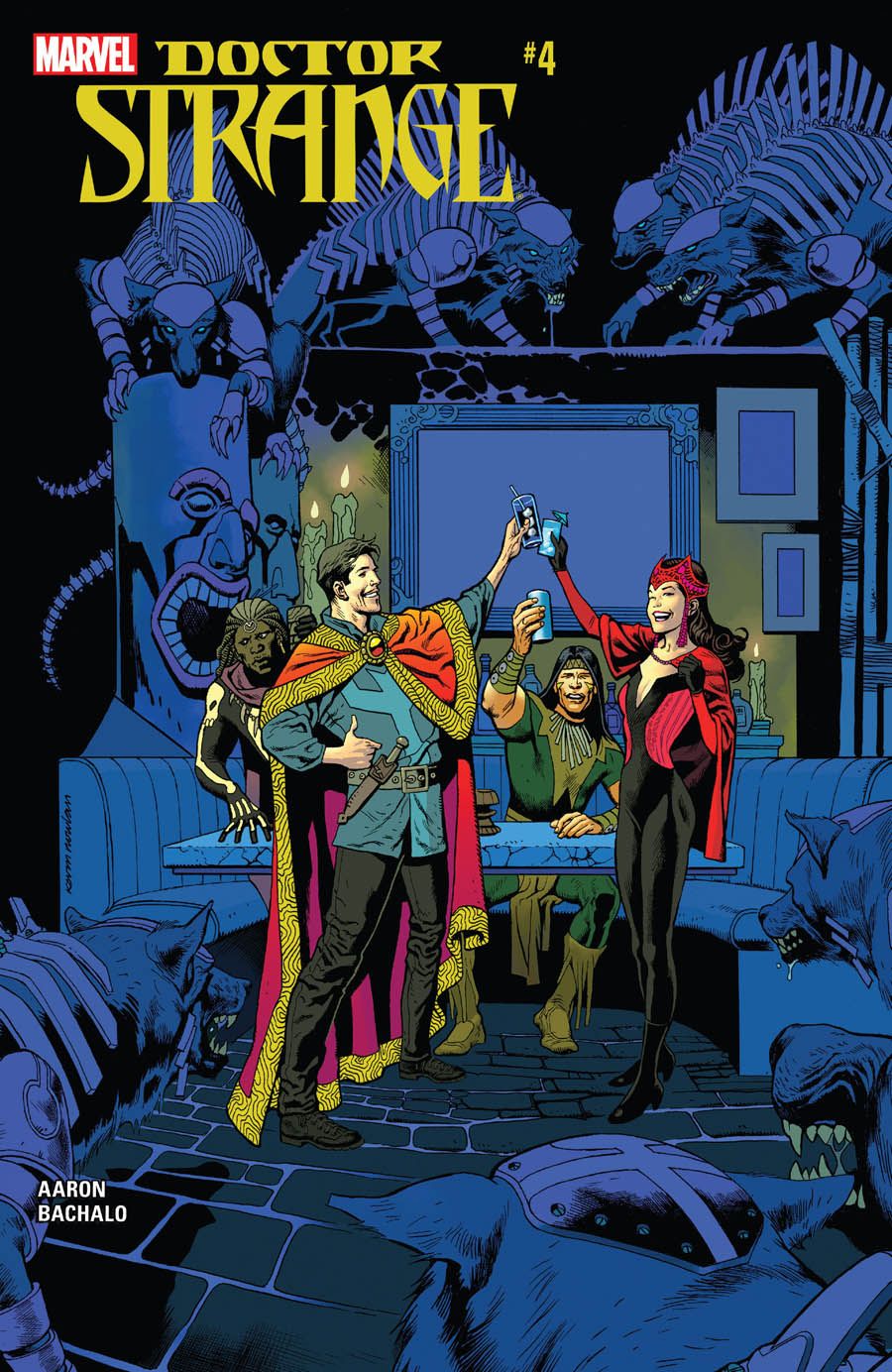There's a long metaphor in Jason Aaron and Chris Bachalo's "Doctor Strange" #4, one that involves punching, puking and using magic. It's the center of the issue, one that everything else ultimately revolves around -- and, as it turns out, that was exactly what the Marvel Universe needed.
One of the greatest problems with magical characters in a superhero world is that their powers inevitably become a deus ex machina, able to solve problems with strange incantations and no real consequences. Aaron tries to tackle that here, with the usage of magic inflicting damage to a magician the same way that punching something will eventually hurt your hands. It's a simple and to-the-point line of thinking; you can hold it off for a while, but hit hard and often enough and you're eventually going to puke. It's an idea that hangs over the comic, showing us what dire straits Doctor Strange is zooming towards and the limitation that keeps him from just fixing everything in the blink of an eye.
It's also a good distraction, one that might have readers forget all of the details from earlier issues. When Zelma returns with the news that books are dying and Strange himself meets with other magic users, there's enough going on that it keeps the reader's mind off of a crucial fact we learned last issue, one Aaron then uses as a perfect cliffhanger to close out the comic; it's a good pace and one that is entertaining even as it quietly prepares to hurl all the characters involved over the proverbial edge. It's also nice to see there's a supporting cast being built up (Wong, Zelma, Monako), with each character having a function to play that -- at the same time -- doesn't allow them to steal the spotlight. Strange is the star and Aaron keeps him firmly center stage.
Bachalo (along with Tim Townsend, Al Vey, Mark Irwin, John Livesay, Wayne Faucher, Victor Olazaba and Jaime Mendoza) continues to turn out some nice art; there's a lot going on within every single page, but it doesn't feel overwhelming or cluttered. The books that rain down from the shelves are detailed, but at the same time you can focus as much or as little on them while not losing track of the character in the center of the scene. Bachalo also handles the colors here, and he uses them (or the lack thereof) to strong effect. The final page is effective in no small part because of how Strange's attackers slowly step out from the shadows. There's just enough brightness so that we can make out some of the details, but enough darkness to make them mysterious and creepy.
"Doctor Strange" #4 is another good installment in a nice run from Aaron and Bachalo; he's a tough character to handle, but I think they've found a good approach that keeps things appropriately weird, but doesn't lose sight of its menace. Add in a good explanation for why Strange can't simply wave his fingers and fix every problem and I feel like the good doctor is in very good hands indeed.

